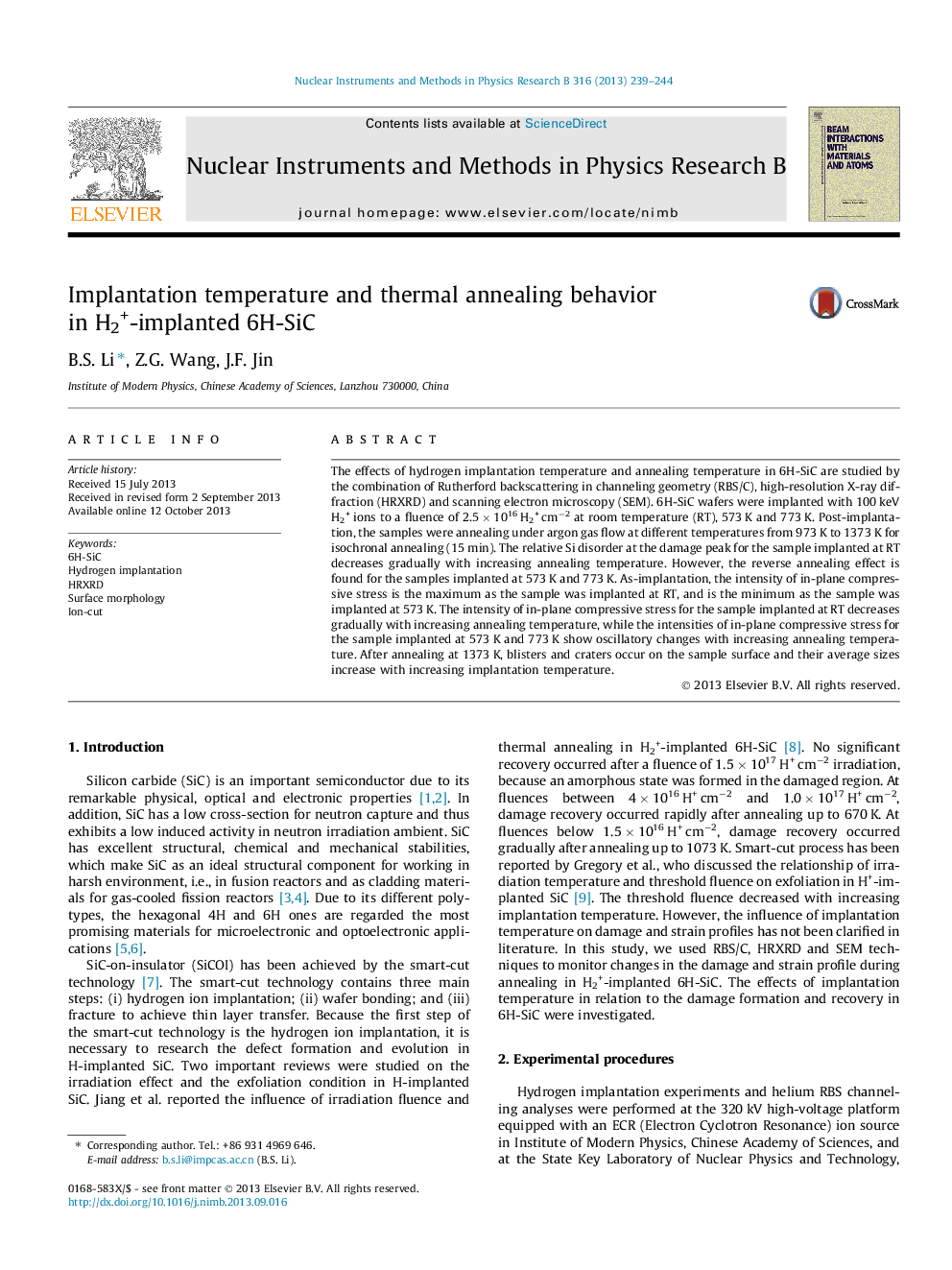| Article ID | Journal | Published Year | Pages | File Type |
|---|---|---|---|---|
| 1680299 | Nuclear Instruments and Methods in Physics Research Section B: Beam Interactions with Materials and Atoms | 2013 | 6 Pages |
Abstract
The effects of hydrogen implantation temperature and annealing temperature in 6H-SiC are studied by the combination of Rutherford backscattering in channeling geometry (RBS/C), high-resolution X-ray diffraction (HRXRD) and scanning electron microscopy (SEM). 6H-SiC wafers were implanted with 100Â keV H2+ ions to a fluence of 2.5Â ÃÂ 1016Â H2+Â cmâ2 at room temperature (RT), 573Â K and 773Â K. Post-implantation, the samples were annealing under argon gas flow at different temperatures from 973Â K to 1373Â K for isochronal annealing (15Â min). The relative Si disorder at the damage peak for the sample implanted at RT decreases gradually with increasing annealing temperature. However, the reverse annealing effect is found for the samples implanted at 573Â K and 773Â K. As-implantation, the intensity of in-plane compressive stress is the maximum as the sample was implanted at RT, and is the minimum as the sample was implanted at 573Â K. The intensity of in-plane compressive stress for the sample implanted at RT decreases gradually with increasing annealing temperature, while the intensities of in-plane compressive stress for the sample implanted at 573Â K and 773Â K show oscillatory changes with increasing annealing temperature. After annealing at 1373Â K, blisters and craters occur on the sample surface and their average sizes increase with increasing implantation temperature.
Related Topics
Physical Sciences and Engineering
Materials Science
Surfaces, Coatings and Films
Authors
B.S. Li, Z.G. Wang, J.F. Jin,
